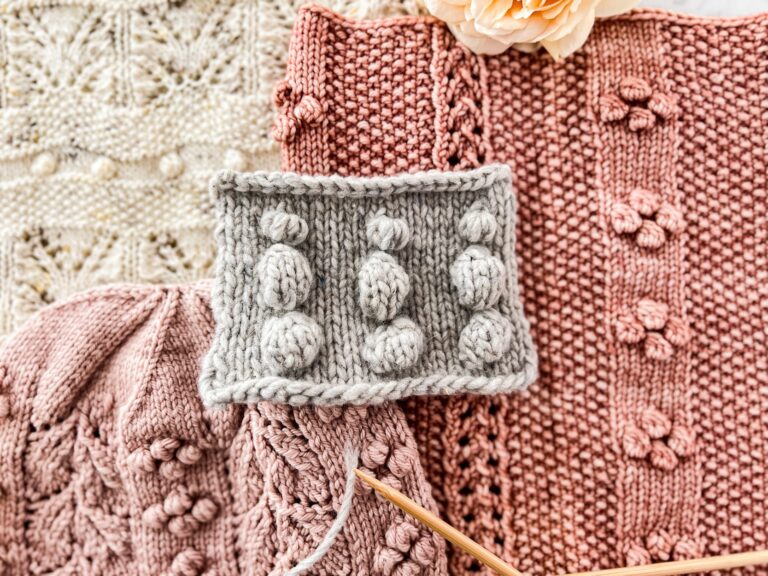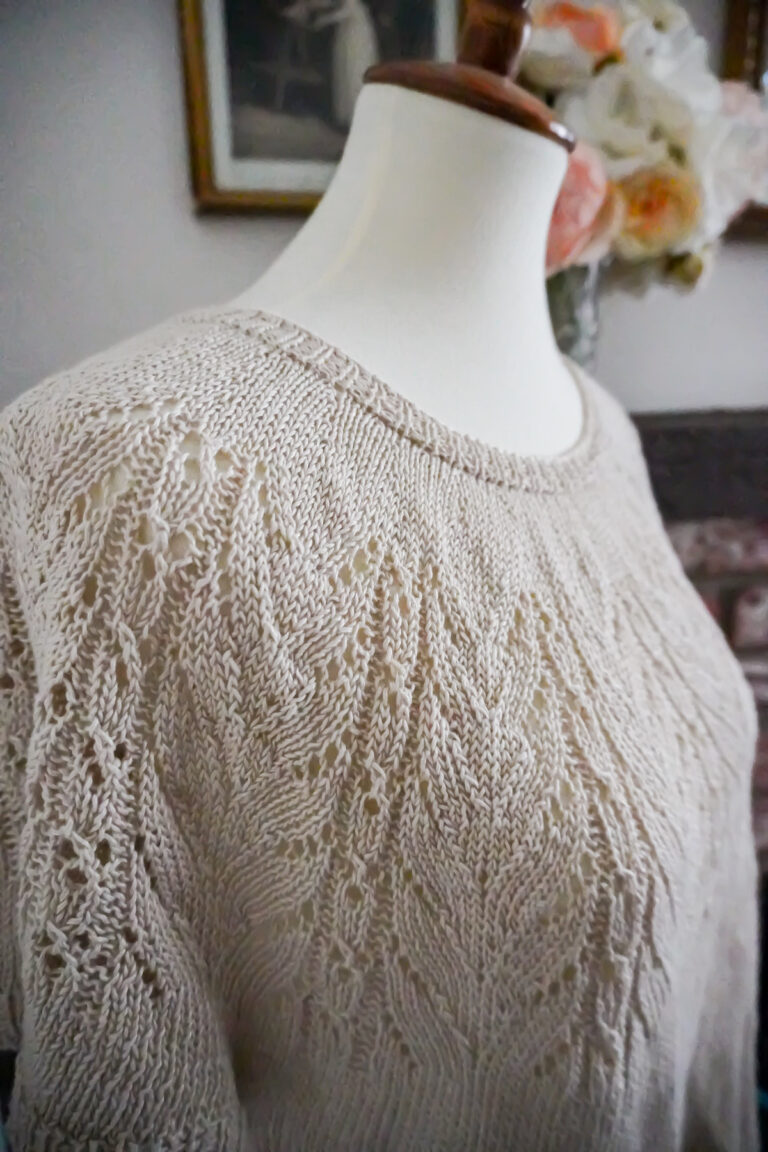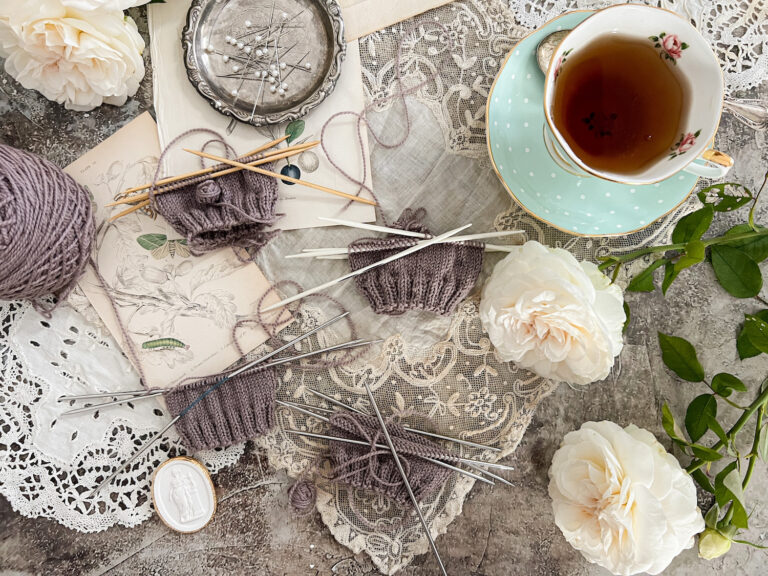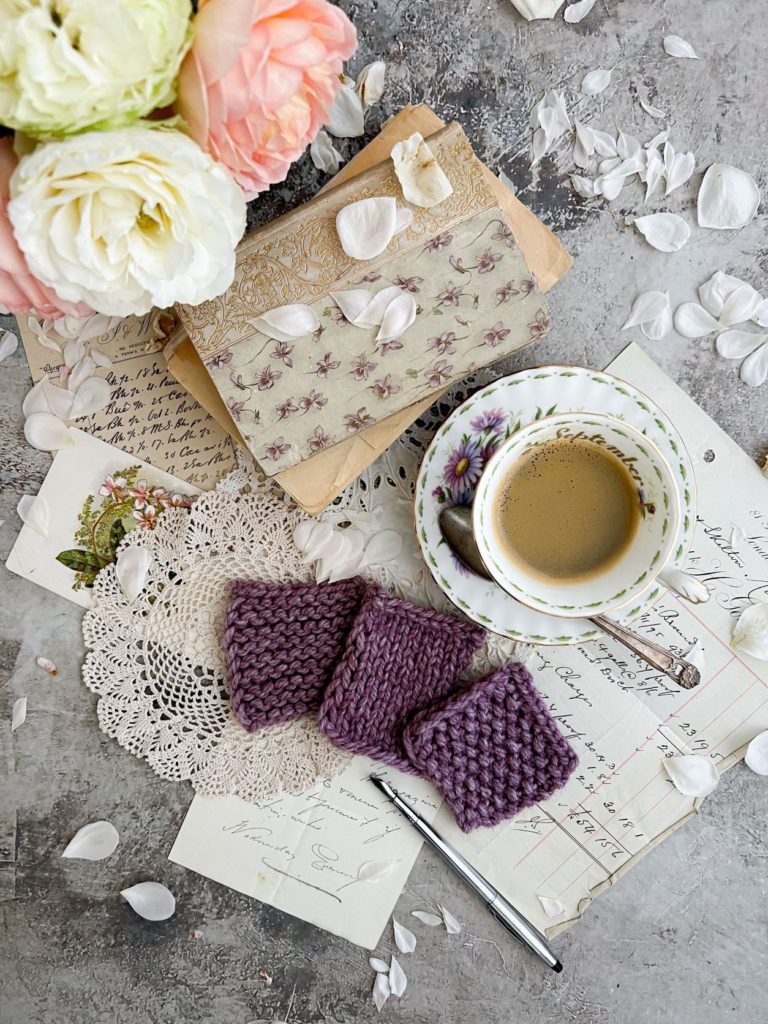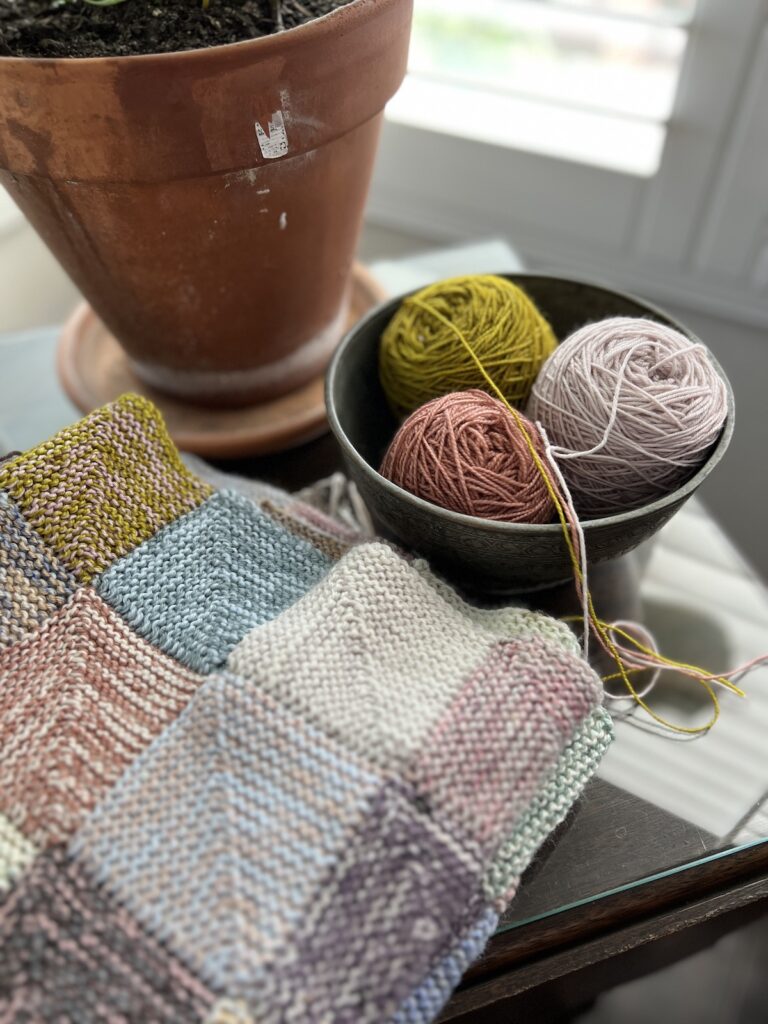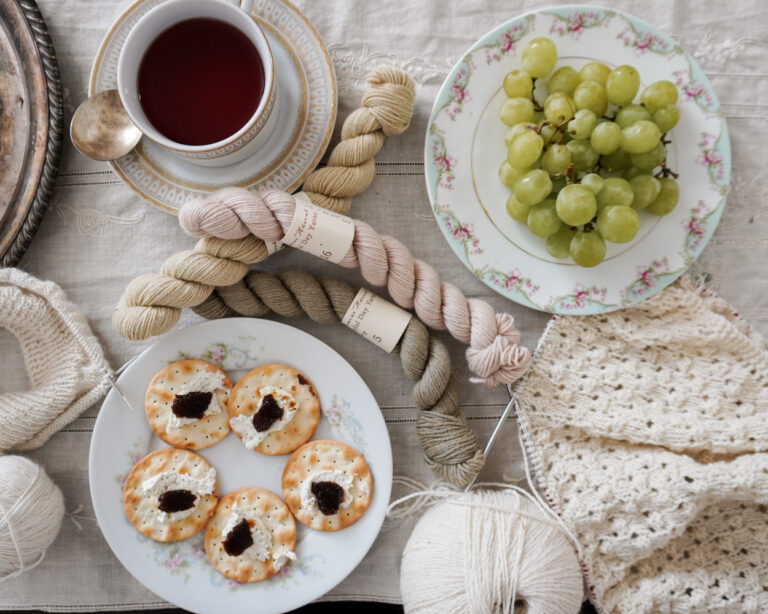It’s a common scenario: you’re scrolling on Pinterest or Ravelry, looking for your next knitting project, when suddenly you stumble across the perfect pattern. There’s just one problem.
The pattern is designed for wool yarn, and you want to use a yarn like linen, silk, or cotton.
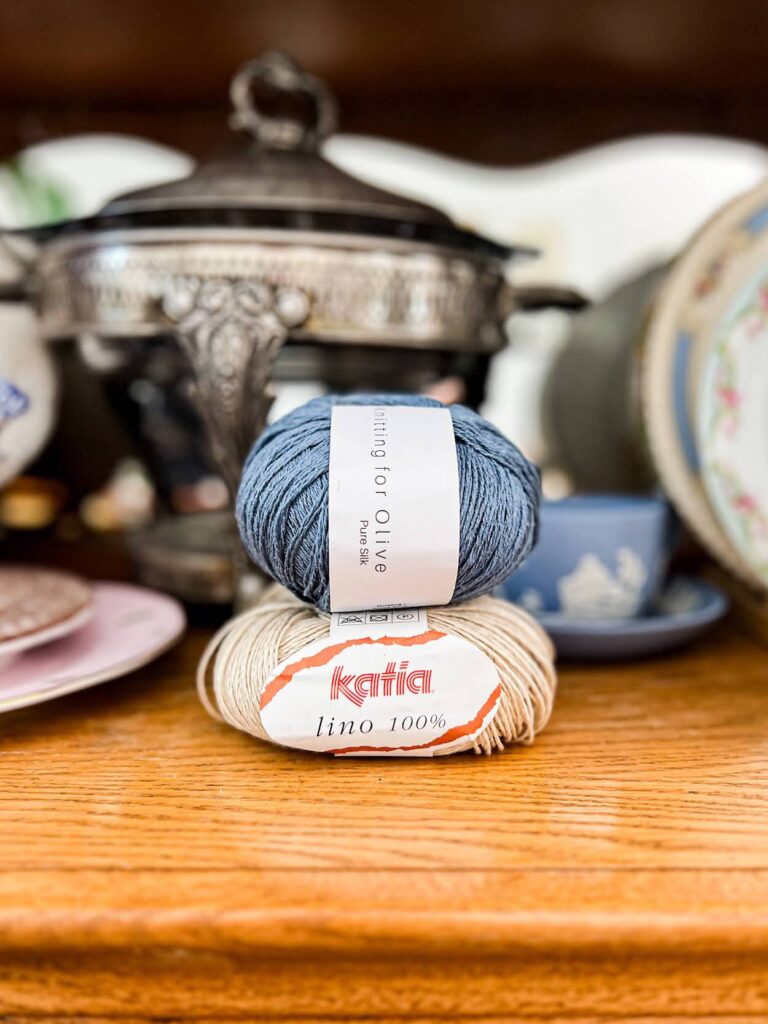
Wanting to use those yarns makes sense, especially if you live somewhere that gets really hot or is warm for a significant part of the year. In fact, that’s part of why I love these yarns (I live in Southern California). The thing is, these yarns don’t behave like wool. That makes the yarn substitution process a little more tricky.
In today’s post, we’re going to explore some of the scenarios where you might successfully swap a summer yarn in place of a wool yarn, the pitfalls of less appropriate substitutions, and how to figure out whether your intended project is a good candidate.
A Quick Note About Terminology
In this post, I’m going to refer to linen, silk, and cotton yarns collectively as “summer yarns.” This is mostly for convenience, because it’s much easier to type out just two words.
And yet, many knitters will tell you that lightweight wool can also be comfortable during the summer. As someone who used to wear wool suits in Downtown Los Angeles during summer heat waves, I don’t dispute that. I was surprisingly comfortable.
Wool, however, does have a tendency to prickle against hot and sweaty skin, and the hotter the weather is, the less comfortable even a very lightweight wool will be. Some knitters live in places where summer is very mild, so that’s not such an issue. Some knitters, though, live in places where summer is 90F (32C) or hotter every day for months on end. Many of those knitters need a different fiber to feel comfortable.
Anyway, all of this is a long-winded way of saying yes, wool can still be a summer fiber in many places, and no, linen-cotton-silk aren’t the only yarns that are good for summer knits sometimes, but we’ve gotta take some shortcuts to keep this post from becoming unwieldy.
Not All Yarns Behave Alike
One of the most important things for knitters to understand is the characteristics of different fibers in their yarn. Depending on the fiber content and how it’s spun up, yarns may be stiff, soft, fragile, drapey, lightweight, or more.
So let’s take a brief moment to think about how wool behaves and how it compares to popular summer yarns.
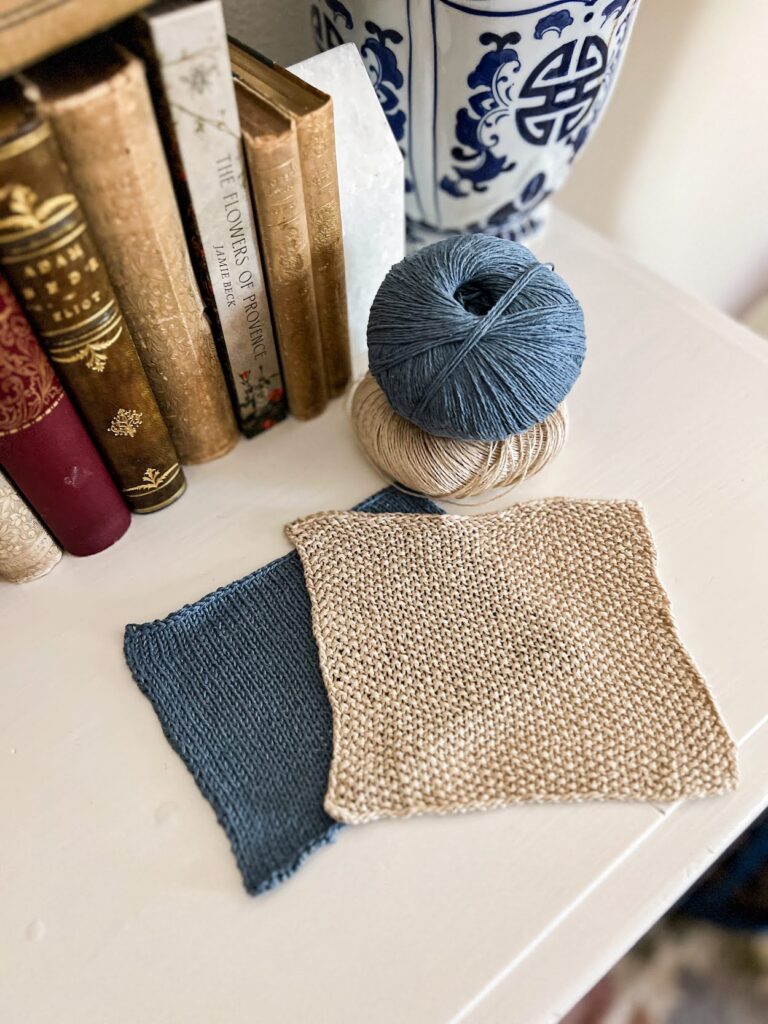
What Makes Wool Unique
Wool is an unusual fiber. For one, it’s elastic, which means that if you stretch it, it will return to its original shape. It also has very good memory, which means if you wet it and then dry it into a specific shape, it will retain that shape. The structure of wool fibers, especially nonsuperwash wool, traps air between them, which means wool is lofty and warm.
Because of all these characteristics, wool is also forgiving of both technique problems and heavy use. A wool garment, when washed and blocked, will minimize the appearance of uneven tension. Thanks to its elasticity and memory, as well as the little scales on the outside of wool fibers that catch on each other and add stability, it will be less likely to sag with wear.
How Summer Yarns Differ
Summer yarns like silk, linen, and cotton are lacking many of these characteristics. While they do have some memory, their lack of elasticity and lack of scales on their fibers means that they are likely to sag over time, especially with repeated wear. These yarns are also more likely to show errors or inconsistencies in stitch tension because their lack of elasticity and lack of halo can’t disguise unevenness.
Most importantly, because all of these yarns are comparatively drapey and do not bounce back very well after stretching, they are not well suited to garments that are meant to fit close to the body. Their tendency to stretch out over time means that what starts out as a close-fitting garment will not remain that way.
Think About Structure
The first thing to consider when deciding to substitute a summer yarn in place of a wool yarn is the structure of the pattern.
If the pattern has no seams, it likely relies on the elasticity of the yarn and the stitches to maintain its shape. This can be risky for summer yarns, which do not have elasticity like wool does. For example, ribbing knit with linen is less likely to stretch and spring back than ribbing knit with wool would be. Pleats and ruffles might be flat or too heavy, while negative ease will simply stretch out until there is positive ease.
What to Watch for in a Knitting Pattern
When you’re choosing a knitting pattern to use with a summer yarn, thing about how the following design features will interact with that yarn’s characteristics.
- Necklines: a wide neck or a deep scoop neck will be more likely to stretch in unhelpful ways. If you want to make sure your garment doesn’t slide off your shoulders or end up with a neckline that’s uncomfortably low for your preference, consider a neckline with a smaller opening or make sure the wider opening is reinforced to prevent too much stretching.
- Sleeve construction: set-in sleeves and, to a lesser extent, drop shoulders will have more stability than raglan sleeves and sleeves with a round yoke will. That’s because the seams add structure that will help minimize stretching where the sleeve joins the body of the garment. Likewise, sleeves with an actual seam across the top of the shoulder will be sturdier than sleeves with no seam or sleeves where the connection is secured with a three-needle bind-off.
- Built-in waist shaping or bust darts: because of summer yarns’ tendency to stretch over time, these shaping elements can migrate with wear. What might have been perfectly positioned bust darts when you first knit the top can end up sitting lower than you’d prefer.
Tip: Look for Garments with a Relaxed Fit
There’s an easy way to minimize issues caused by yarn that stretches over time. If you choose a garment that doesn’t require a perfectly precise fit, then a little change in how it fits won’t be a big issue.
Boxy tees, garments designed with lots of drape, and anything with positive ease built into the design will make a better choice for summer yarns.
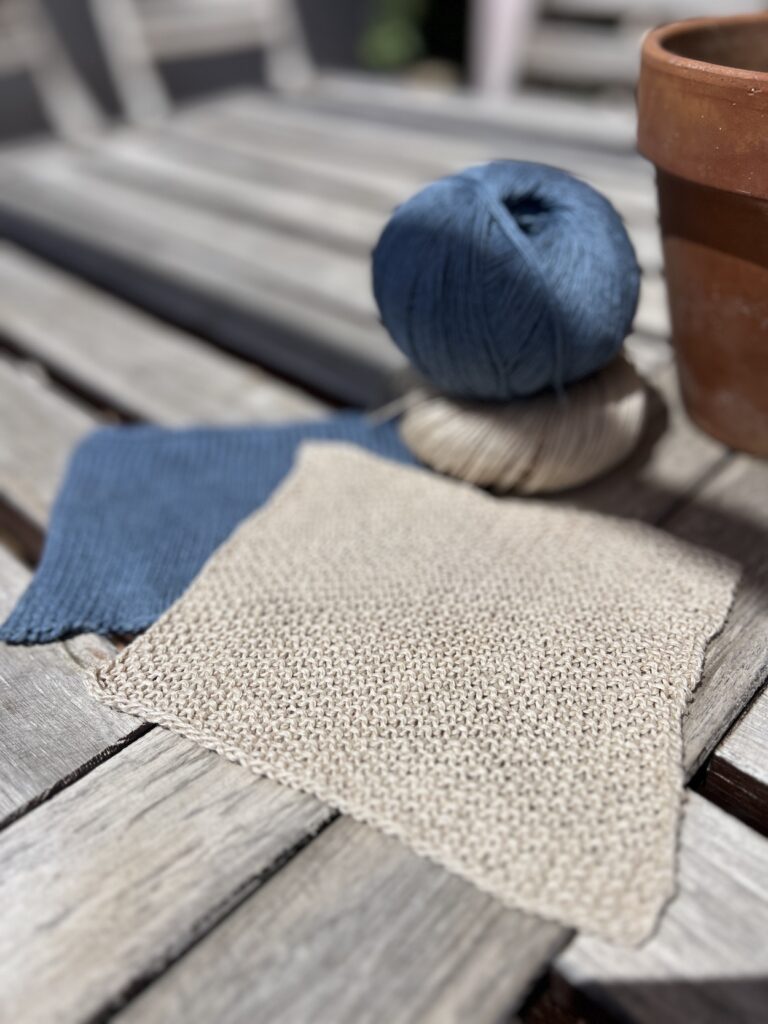
Gauge and Swatching Matter Even More
If you’ve been on the knitting internet for even a little bit, you’ve likely seen someone say something along the lines of, “I’ve been knitting for 598 years, I’ve never knit a gauge swatch, and it’s never been a problem.”
Okay. That’s cool. Unfortunately, with summer yarns, gauge swatching is crucial. You really don’t want to skip this step. Here’s why.
How Summer Fibers Change After Blocking
If you’re knitting a summer top, at some point, you’re going to have to clean that top. Odds are, you’ll be cleaning that top with water.
And water affects summer yarns in distinct ways. While wool may stretch a little when soaked in water, some summer yarns stretch a LOT.
The only way to know how much your project will stretch after washing is to knit a good gauge swatch and handle it appropriately. If you don’t, you’re playing with fire.
What You Need to Do Differently
Because we’re checking for how much the yarn will grow after it’s soaked in water, we need two sets of data: the unwashed gauge (both row gauge and stitch gauge) along with the washed gauge (also both row and stitch). Keep a small notebook handy for this process.
Once you know those numbers, you can make informed decisions about what size to knit, whether and how to modify the length, etc. This matters because many patterns will give instructions like, “Knit until the body is 11” from the hem.”
An instruction like that is fine for nonsuperwash wool but can be a real issue when knitting with summer yarns because of the big change in gauge after blocking. If you know your swatch grew in length by 16% after blocking, you also know to knit the body 16% shorter than you normally would.
To make sure you get a good sense of how the yarn changes, you should also consider knitting a larger than usual gauge swatch. That will allow the swatch to reflect some of the effects of gravity on a worn garment.
Stitch Patterns Will Look Different
Along with the yarn behaving differently when it comes to shape, you may also encounter some surprises when it comes to how stitch patterns look in these yarns. Let’s explore that a bit more.
Openwork Will Bloom
Because most wool yarns have at least a little bit of a halo, there is usually a slight fuzziness to openwork stitch patterns knit in those yarns. Summer yarns, however, have no halo, which means the spaces in the lacework will be extra open and clear.
This is usually a good thing, but might not always be what you want! For example, a knit stop with some lacework across the chest might feel a little uncomfortably revealing in a summer yarn (or not! That’s totally a matter of personal preference, but it’s something you should know about).
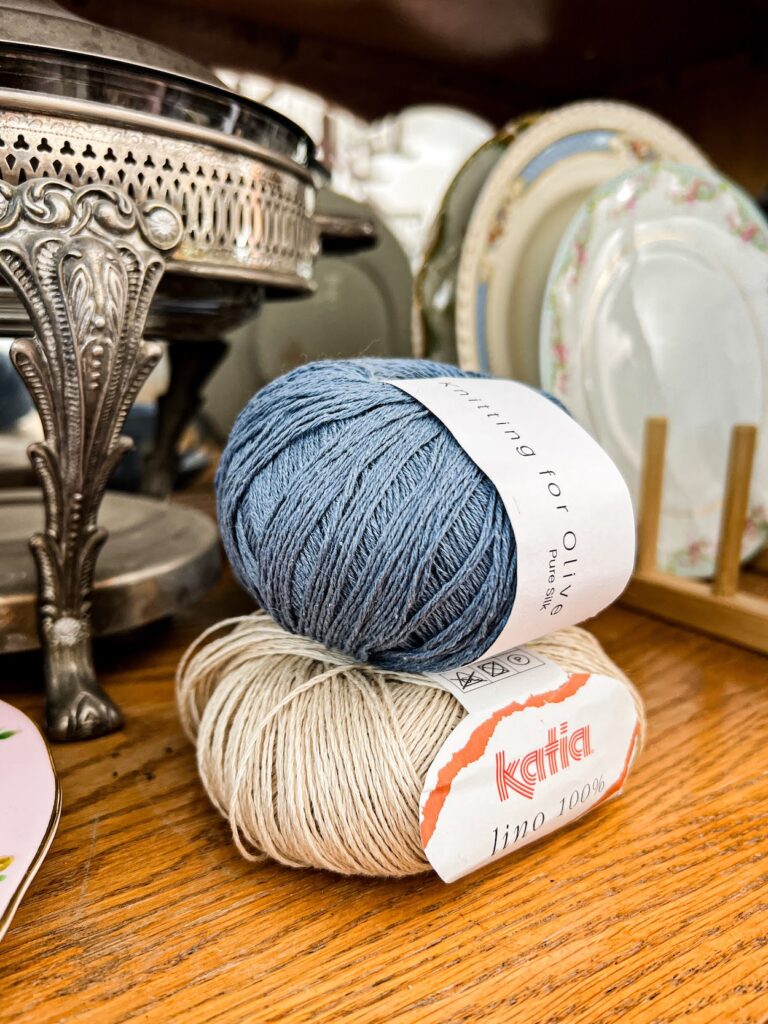
Cables Might Fall Flat
Cables are one of those stitch patterns that really shine with a plump, bouncy yarn. That kind of texture is usually best achieved using wool. For really intricate cables, summer yarns are generally not going to be your best bet.
That’s why, for example, I wouldn’t recommend a classic Aran sweater using a summer yarn. While simpler cabled sweaters are popular in lightweight cotton yarns for summer, the really intense cables can sometimes look squashed after blocking in a summer yarn.
Ribbing Doesn’t Bounce
Finally, as I briefly mentioned above, ribbing doesn’t have the same effect in summer yarns. If you’re relying on ribbing to act more like elastic and add some stability or a close-fitting portion to your garment, a summer yarn isn’t going to be a good choice.
If you look at pictures of my linen and silk tees, you’ll notice that although they have ribbed hems, neither of those hems really do much other than prevent curling and make it look finished. There’s no stretch there. They hang as straight and loose as the stockinette body.
When Substitution Works Well—and When It Doesn’t
This blog post has gotten significantly longer than I had originally planned, so let’s wrap things up here with a quick cheat sheet. If you’re looking at a garment designed for wool and wondering whether it’s a good candidate for a summer yarn substitution, here are things that will help you make your decision.
Elements of Potentially Good Candidates for Yarn Substitution
- Boxy tops without much shaping in the torso
- Set-in sleeves or drop shoulders
- Garments that have seams for stability
- Narrower or reinforced necklines
- Subtle texture, some kinds of lacework
Elements of Potentially Risky Projects for Yarn Substitution
- Close-fitting sweaters or garments with lots of shaping in the torso
- Intricate cables
- Seamless designs without added reinforcement
- Wide necklines
- Any pattern that depends heavily on elasticity for structure
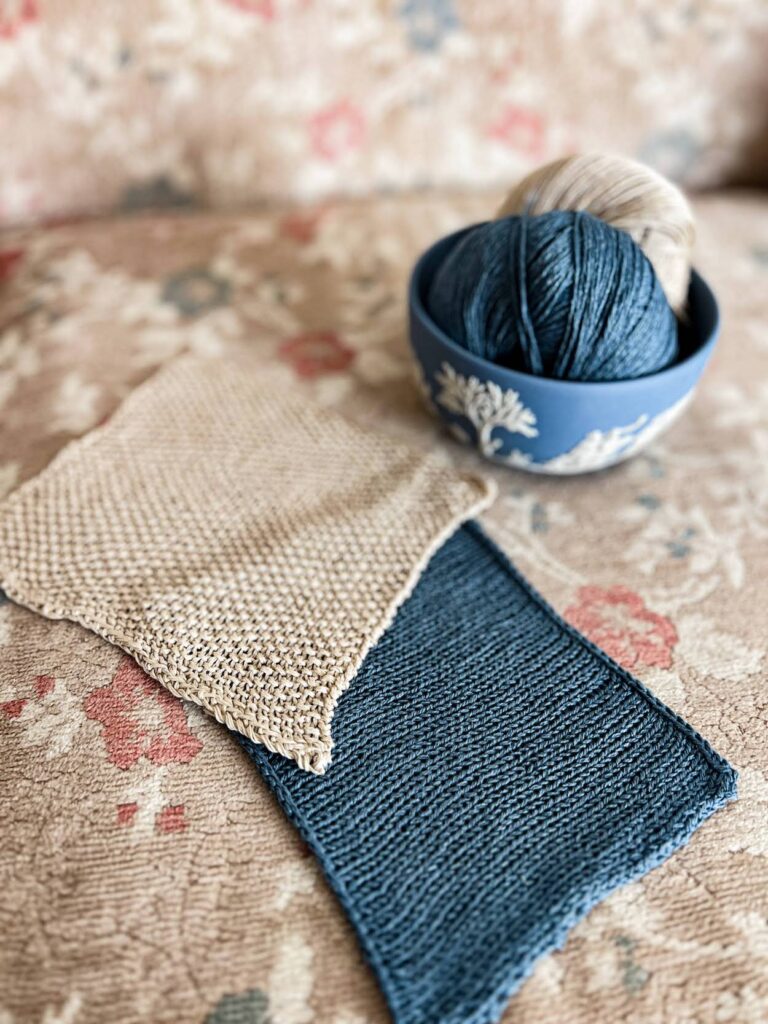
Final Thoughts
Remember, the yarn is what it is, and there’s only so much you can do to fight that. If you’ve set your heart on a particular pattern but you know the yarn you have isn’t well suited for it, save the pattern for another day. I’ve unfortunately tried a few times to shoehorn the wrong yarn and the wrong pattern, and it just came out a disappointment.
But it’s equally important to remember that there’s no harm in experimentation. If you’re not sure how the yarn will play with the pattern, it’s okay to give it a try and see how things go. The worst that can happen is that you’ll frog and start again, and you’ll have learned some new things along the way.
Let’s stay connected!
Join my newsletter for 30% off all new releases, regular updates with helpful tips and tricks, first crack at registration for upcoming workshops, exclusive discounts, and more.
Prefer to read without ads? Join my Patreon, which starts at just $1 a month!
Join the A Bee In The Bonnet Facebook Group to participate in knitalongs and other fun community events
Come hang out with me on the A Bee In The Bonnet TikTok
Follow along on the A Bee In The Bonnet Instagram
Get inspired via the A Bee In The Bonnet Pinterest

